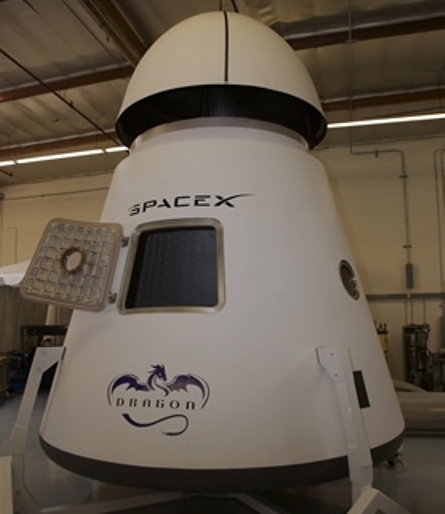Space Exploration Technologies (SpaceX) has released the first image of its Dragon capsule engineering unit model zero, following its internal preliminary design review (PDR) that was completed earlier this month. The model is a manufacturing pathfinder, made just as the production flight units will be, and this model and others will be used for splashdown and structural testing.
|
|
|---|
The Dragon blunt body capsule has a dry mass of 3,180kg (7,000lb) and a 3.81m (12.5ft) diameter base, when its ablative thermal protection system (TPS) is in place.
Dragon is described as having an integrated service module (SM) element. This integrated SM houses the reaction control, orbital manoeuvring system thrusters’ propellant tanks and it takes up about 1.3m of the lower portion of the capsule.
The habitable pressurized section, with its carbon fibre sandwich nosecone structure above, is a cone shape with an angle of 15degrees. NASA’s Orion crew exploration vehicle has a cone angle of 33degrees and Russia’s Soyuz capsule an angle of 12degrees.
Dragon can carry 1,227kg of Monomethylhydrazine, Nitrogen Textroxide storable propellant for its OMS/RCS thrusters and its “trunk”, in which the vehicle's potentially retractable solar arrays and thermal radiators are stowed, adds another 681kg to its mass. This trunk is the joiner skirt between the Dragon and the capsule’s Falcon 9 booster’s second stage. The Falcon 9 that launches Dragon will have at least an 8,700kg to low Earth orbit capability.
The wet mass of Dragon is expected to eventually be about 4,540kg, with a final maximum take off weight, including its 2,500kg payload of cargo or crew, of around 7,000kg.
Source: FlightGlobal.com
























